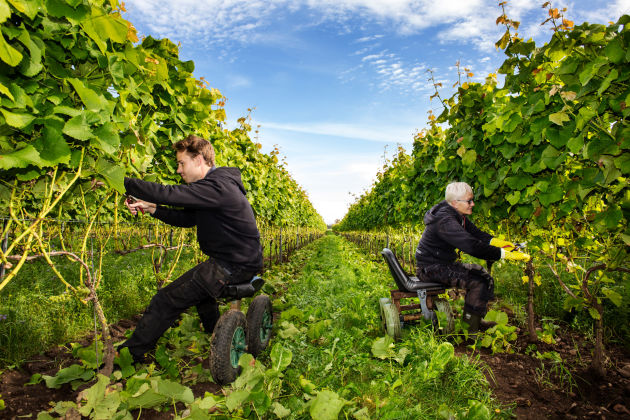
Scandinavian style: Climate change pushes wine to the fringes
For much of the winemaking world, it’s an inconvenient truth that climate change is changing how easily and successfully wine can be made.
This is particularly true when it comes to the world’s major viticultural centres, where increasingly erratic weather conditions threaten to drive down production.
On flipside to this is the extent to which our mutating climate is pushing Europe's wine-growing margins northward into Scandinavia, with fascinating results.
Nowhere is the changing boundaries of wine production clearer than the dozens of vineyards that have sprung up across Denmark and Sweden in the past two decades, aided by hybrid grapes plus continually improving viniculture know-how.
While 15 years ago, there were just two commercial vineyards in Sweden, today there are nearer 40. Meanwhile Danish Wine Association, Dansk Vin, lists around 90 commercial vineyards, up from just eight in 2000.
Danish wine-growing is concentrated near Copenhagen in the Zealand region, plus Jutland. The southernmost Swedish province of Skåne – just east of Copenhagen over the Oresund Bridge – is Sweden's vineyard heartland.
Alongside longer and warmer summers that have extended the Nordic growing season into September, winters have been milder by almost 2°C, according to Sweden’s Rossby Centre for climate research. Even at 56 degrees latitude, these areas are actually receiving more hours of average sunshine during the growing season than some European neighbours to the south, with colder air tempered by proximity to the sea.
“Fruit has more flavour grown in a cold climate because of the acidity,” said Murre Sofrakis, a pioneer of Swedish winemaking when he established Klagshamn vineyard in 2001. “And the 'standard quality' wine has improved a lot.”
Solaris – an oak-friendly varietal noted for elderberry and gooseberry notes – has become a key grape underpinning Nordic whites.
“The best are often the opposite of styles people would expect,” said Sofrakis. “They are powerful, and often barrel fermented with alcohol close to 15% or more.”
Though quality is there, Swedish vineyards face the hurdle of only being able to sell to restaurants or the state-run alcohol monopoly stores (Systembolaget). “Unfortunately, not many restaurants serve Swedish wines,” said Sofrakis, though there are pathfinders like Aludden Providore in Lerum, which lists around 30 Swedish wines.
Being able to sell direct to visitors has helped Danish vineyards in terms of both income and profile. The largest is Dyrehøj, established on the hilly Røsnæs peninsula west of Copenhagen in 2008. Today, its 25,000 vines major on Solaris for whites and Cabernet Cantor for ever-improving reds.
Founded in 2007, Daniel Milan's Vexebo Vin in Zealand is leading the way in Danish natural wines, producing between 1500 and 2000 bottles a year including an orange Solaris sold at prestige restaurants like Copenhagen's three Michelin-starred Geranium.
And Nordic wines are garnering international awards. Denmark's SkaersØgaard vineyard scored a 92-point gold at the 2018 PIWI International with a 2016 Rondo, Regent and Leon Millot red, while Sweden’s Södåkra bagged gold at the 2017 PIWI for 2016 Solaris whites. Sparkling and natural wines have earned recent accolades too.
Think of the Danish and Swedish wine scene like England's 15 years ago, and you'll appreciate their burgeoning promise.
Top photo (Visit Sweden): No, Sweden isn’t known for its wine, though there are close to 40 vineyards in Sweden. Ästad Vingård is one example, located in the province of Halland in the south of the country.
Keywords:
- wine
- Wines
- climate
- Vineyards
- climate change
- areas
- growing
- sweden
- Copenhagen
- swedish
- danish
- commercial vineyards
- growing season
- wine growing
- danish wine
- røsnæs peninsula
- røsnæs




